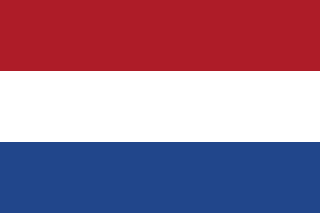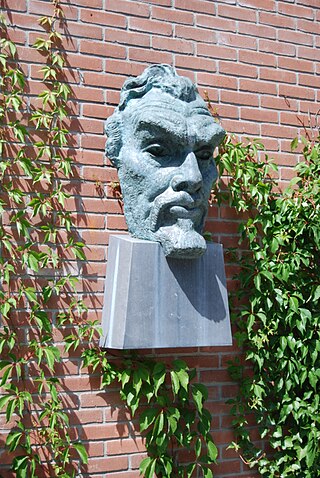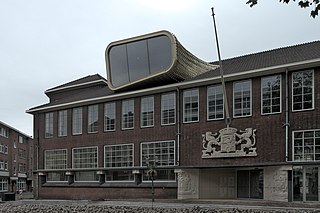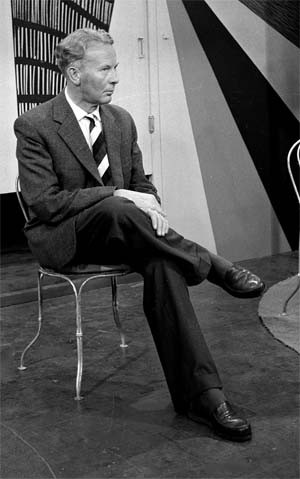Zilveren Nipkowschijf is a Dutch television award that has been given out since 1961 by a selection of Dutch critics.

Adrianus "Ard" Schenk is a former speed skater from the Netherlands, who is considered to be one of the best in history. His first Olympic success came in 1968, when he won a silver medal at the 1968 Winter Olympics. Between 1970 and 1972 Winter Olympics, Schenk won three consecutive World Allround Speed Skating Championships. He won three gold medals at the 1972 Winter Olympics, becoming, along with Galina Kulakova of Soviet Union, the most successful athlete there.

Cornelis Arie "Kees" Verkerk is a former speed skater from the Netherlands.

The Netherlands men's national basketball team represents the Netherlands in international basketball matches. The national team is governed by Basketball Nederland.

The Netherlands competed at the 1964 Summer Olympics in Tokyo, Japan. 125 competitors, 105 men and 20 women, took part in 57 events in 12 sports. Simon de Wit, who had represented his country in rowing at the 1936 Summer Olympics, was the Netherlands' Chef de Mission.

The Netherlands competed at the 1936 Summer Olympics in Berlin, Germany. 165 competitors, 145 men and 20 women, took part in 75 events in 15 sports.

The Conservatorium van Amsterdam (CvA) is a Dutch conservatoire of music located in Amsterdam. This school is the music division of the Amsterdam University of the Arts, the city's vocational university of arts. The Conservatorium van Amsterdam is the largest music academy in the Netherlands, offering programs in classical music, jazz, pop, electronic music, early music, music education, and opera.

The Bergen School was a movement in Dutch painting which manifested itself between 1915 and 1925. It is characterised by an expressionist style, influenced by cubism and showing a preference for darker colours. The participating artists lived and worked in or near the artist's village Bergen in the province of North Holland.

The Duisenberg School of Finance (DSF) was an educational organization in the Netherlands. It offered Master's level education in finance between 2008 and 2015. The school was launched as a collaborative initiative between the Dutch financial sector in conjunction with local and international academic institutions. Amongst others, the founders of the initiative were Nout Wellink and Minister of the Economic Affairs, Maria van der Hoeven. The name was chosen by the founders to honor Wim Duisenberg, the first President of the European Central Bank.
Een dubbeltje te weinig is a 1991 Dutch film directed by André van Duren and written by Peter van Gestel. It was released internationally under the title A Penny Too Short.

Museum van Bommel van Dam is a Dutch museum of modern art in Venlo in the southeast Netherlands. The museum belongs to the German/Dutch cooperation Crossart, a partnership between 7 German museums in Westfalen and 4 Dutch museums in Gelderland and Limburg. Exhibitions are held of paintings or drawings, sculpture or photography.

Kunst zij ons doel, or KZOD, is the name of an artists club in the Waag, Haarlem.

The New Hague School was a movement in the Dutch fine arts of the 1950s and 60s. It opposed the Cobra avant-garde movement and found its inspiration in 17th-century art and the experiences of the Barbizon School and the resulting Hague School.

Cornelis Jan (Kees) Stip was a Dutch epigram poet. He wrote under many pseudonyms, most notably Trijntje Fop and Chronos.

Onze Kunst van Heden was an exhibition held in the winter of 1939 through 1940 at the Rijksmuseum in Amsterdam. Due to the threat of invasion in the years leading up to World War II, the Netherlands' government stored many items from the Rijksmuseum's permanent collection. The resulting empty gallery space was utilized by contemporary Dutch artists to exhibit and sell their art. It was organized by the director of the Rijksmuseum Frederik Schmidt Degener. The show was open to all artists, with each artist allowed to enter four pieces. 902 artists exhibited 3,200 works of art in 74 rooms and cabinets of the Rijksmuseum.
„De kunstenaar kan in tijden van maatschappelijke benauwenis weinig positiefs doen om rampen af te wenden, maar wel kan hij door mede te helpen nationale uitingen op het eigenaardigst naar voren te brengen het gemeenschapsbesef versterken. Wanneer de belangstelling van het publiek uitgaat naar deze manifestatie, die in zulk een omvang in Holland nog niet gezien is, dan zal menige kunstenaar zich op zijn beurt gesterkt voelen".
"The artist can do little positive in times of social distress to avert disasters, but he can, by helping to bring out national expressions in the most idiosyncratic way, strengthen the sense of community. When the public is interested in this event, which has not yet been seen to such an extent in Holland, many artists will feel strengthened in turn."
The Arlecchino is an award that is awarded annually in the form of a bronze statue by a jury of the Dutch Association of Theater and Concert Hall Directors (VSCD) as a prize for the most impressive male supporting actor role of the Dutch theater season. The prize bears the Italian name of the character Harlequin, and was first awarded in 1964. The figurine has been designed by Eric Claus since 2005. Previous designers were Nic Jonk, and Pépé Grégoire.
This page is based on this
Wikipedia article Text is available under the
CC BY-SA 4.0 license; additional terms may apply.
Images, videos and audio are available under their respective licenses.











